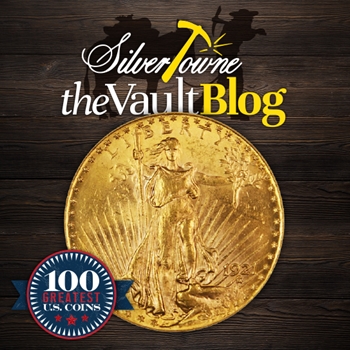
When a coin has just two known examples and a certified population of one, you would think it would grace the top ten of a 100 Greatest U.S. Coins list. However, sometimes things are more complicated than just low mintages and it is not always the deciding factor when placing it among other greats. With help from author Jeff Garrett, we will explore this rare coin featured in Whitman Publishing’s fourth edition of the series.
#51 – 1921 Proof Saint-Gaudens Double Eagle
In the summer of 2000, the numismatic world was shocked by the unveiling and offering of an unknown example of a Proof Roman-finish presentation strike 1921 double eagle. It was reported that this example traced back to the United States Mint Director in 1921, Raymond T. Baker, and was struck in commemoration with his nephew being born. The coin was slightly cleaned and ended up selling for $203,500. Six years later, another example appeared at auction and was incorrectly attributed to a MS63. However, the coin would end up selling after a heated battle for $1,495,000. Although identical to the one from Sotheby’s 2000 auction, it was original and untouched.
While the coins caused quite a commotion, it is difficult to determine how they are to be designated, according to the coin community. The surfaces resemble those of the Roman-finish Proof gold coins that were produced in 1909 and 1910 as their side-by-side comparisons made a strong case for the Proof designation. They were also minted under special circumstances and presented by Mint officials with no intent of ever seeing circulation. Their discovery makes for an interesting discussion, one that would benefit from more research into their unique existence.
Circulation strike issues for the 1921 Sain Gaudens was 528,500. Most of these were destroyed in the 1930s as part of the great gold coin melting. Very few remain and nothing of significance has been brought forth.
There is no real historical value for the rare coin other than their auction values until 2008. The value was $2.5 million. By this fourth edition (2015), that value increased to $3.5 million.







